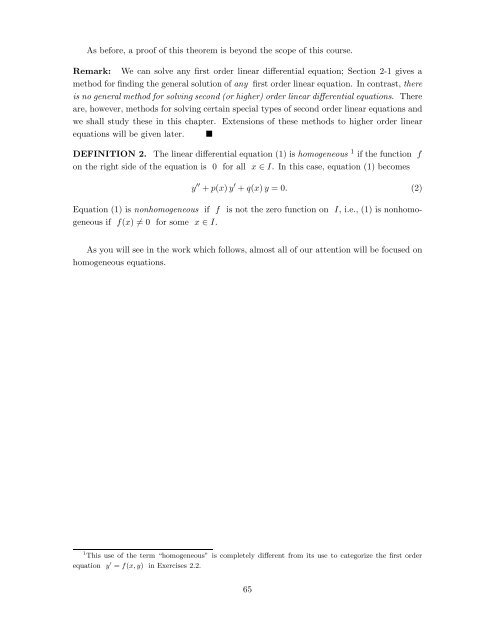Second Order Linear Differential Equations
Second Order Linear Differential Equations
Second Order Linear Differential Equations
Create successful ePaper yourself
Turn your PDF publications into a flip-book with our unique Google optimized e-Paper software.
As before, a proof of this theorem is beyond the scope of this course.<br />
Remark: We can solve any first order linear differential equation; Section 2-1 gives a<br />
method for finding the general solution of any first order linear equation. In contrast, there<br />
is no general method for solving second (or higher) order linear differential equations. There<br />
are, however, methods for solving certain special types of second order linear equations and<br />
we shall study these in this chapter. Extensions of these methods to higher order linear<br />
equations will be given later. <br />
DEFINITION 2. The linear differential equation (1) is homogeneous 1 if the function f<br />
on the right side of the equation is 0 for all x ∈ I. In this case, equation (1) becomes<br />
y ′′ + p(x) y ′ + q(x) y =0. (2)<br />
Equation (1) is nonhomogeneous if f is not the zero function on I, i.e., (1) is nonhomogeneous<br />
if f(x) = 0 for some x ∈ I.<br />
As you will see in the work which follows, almost all of our attention will be focused on<br />
homogeneous equations.<br />
1<br />
This use of the term “homogeneous” is completely different from its use to categorize the first order<br />
equation y ′ = f(x, y) in Exercises 2.2.<br />
65

















